Abstract
Parotid fluid corticosteroids, substantially comprised of cortisol and cortisone, were previously demonstrated to rise to far greater levels 4 hr after administration of ACTH than they did in the third trimester of pregnancy, although the plasma total corticosteroid concentrations were similar in these two states. It was therefore suggested that only nonproteinbound corticosteroid gains access to parotid fluid. In the present study parotid fluid cortisol and cortisone and plasma dialyzable cortisol concentrations have been measured in normal men before and 2 hr after 40 U ACTH, and, in another group, before and after 10 days of diethystilbestrol (5 mg daily). Total plasma cortisol rose from a mean of 6.3 to 17.9 μg/100 ml after ACTH and from 14.6 to 39.4 mg/100 ml after the estrogen. However parotid fluid cortisol plus cortisone rose from 0.8 to 2.6 μg/100 ml after ACTH and to only 2.2 after estrogen. This rise resembled that of the plasma dialyzable cortisol (control 0.4, ACTH 1.8, estrogen 1.2 μg/100 ml) rather than the increase in total plasma cortisol which was over twice as high after estrogen as after ACTH. Thus parotid fluid corticosteroids seem to be a good measure of nonprotein-bound corticosteroid, the cortisol available to the cell. The total amount of cortisol plus cortisone excreted is approximately constant, independent of parotid fluid flow rate. Cortisone exceeds cortisol in parotid fluid in the basal state, but after ACTH the situation is reversed.
Full text
PDF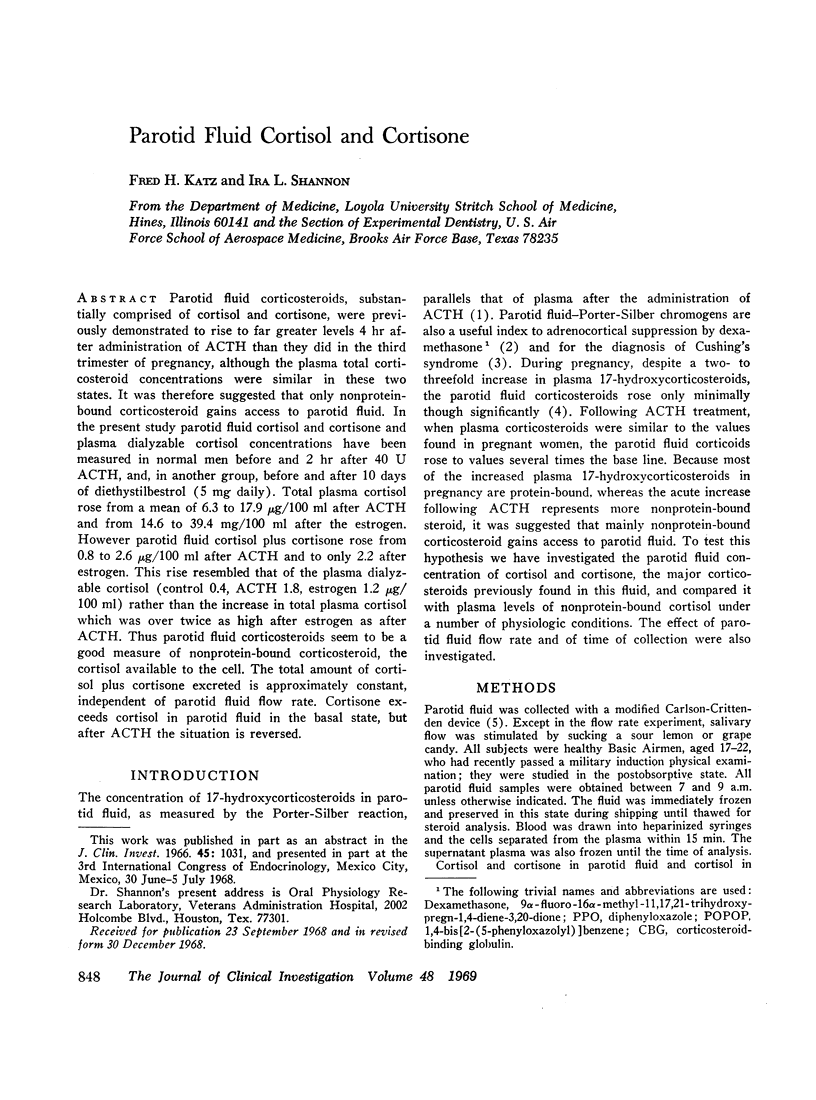

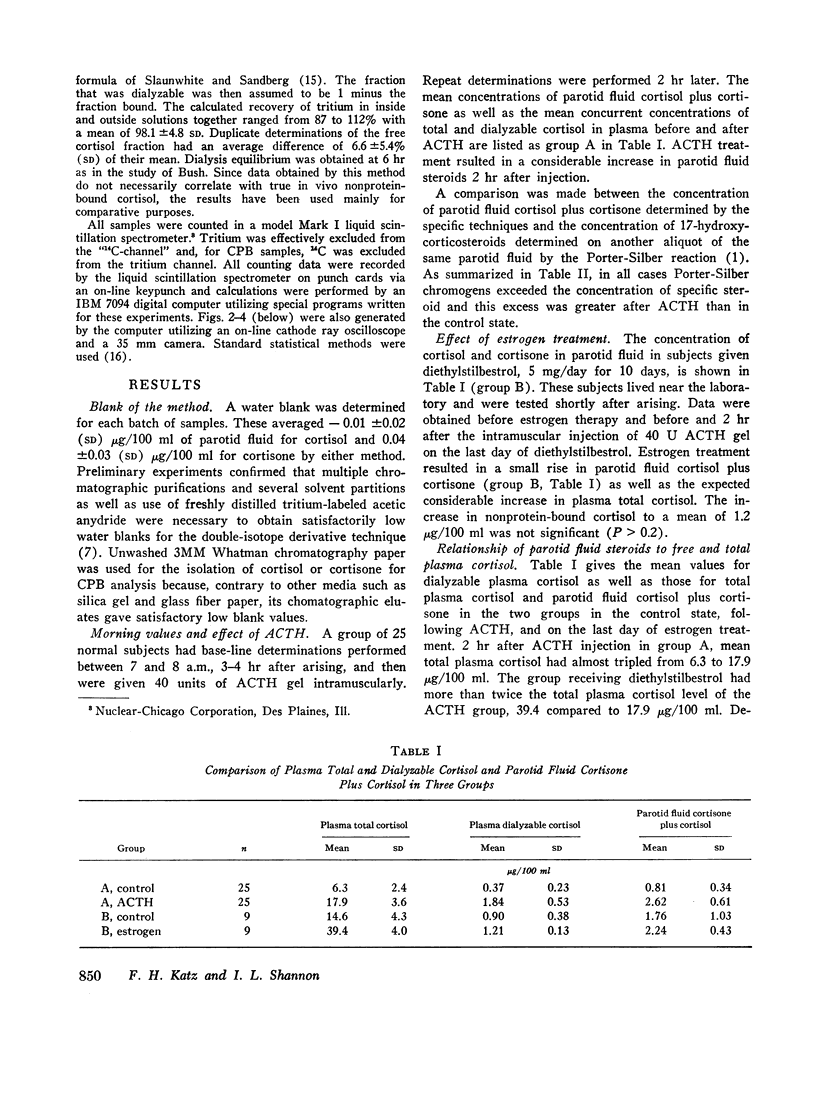
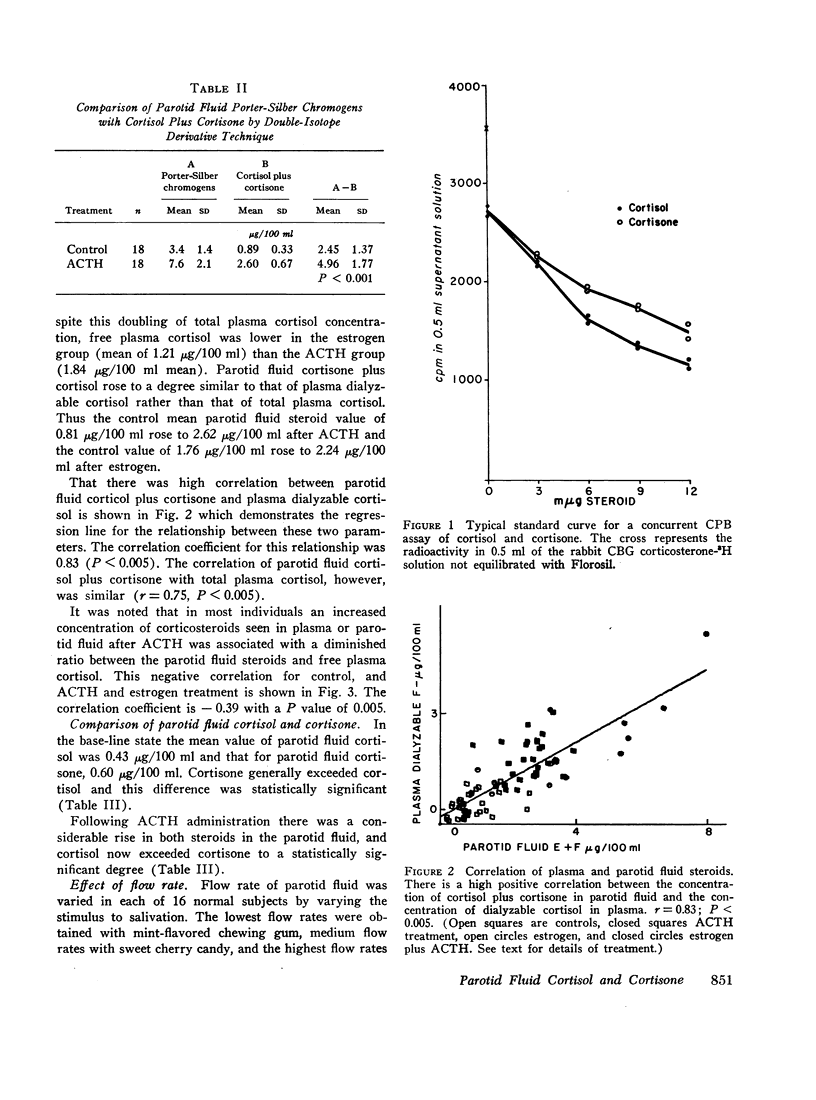
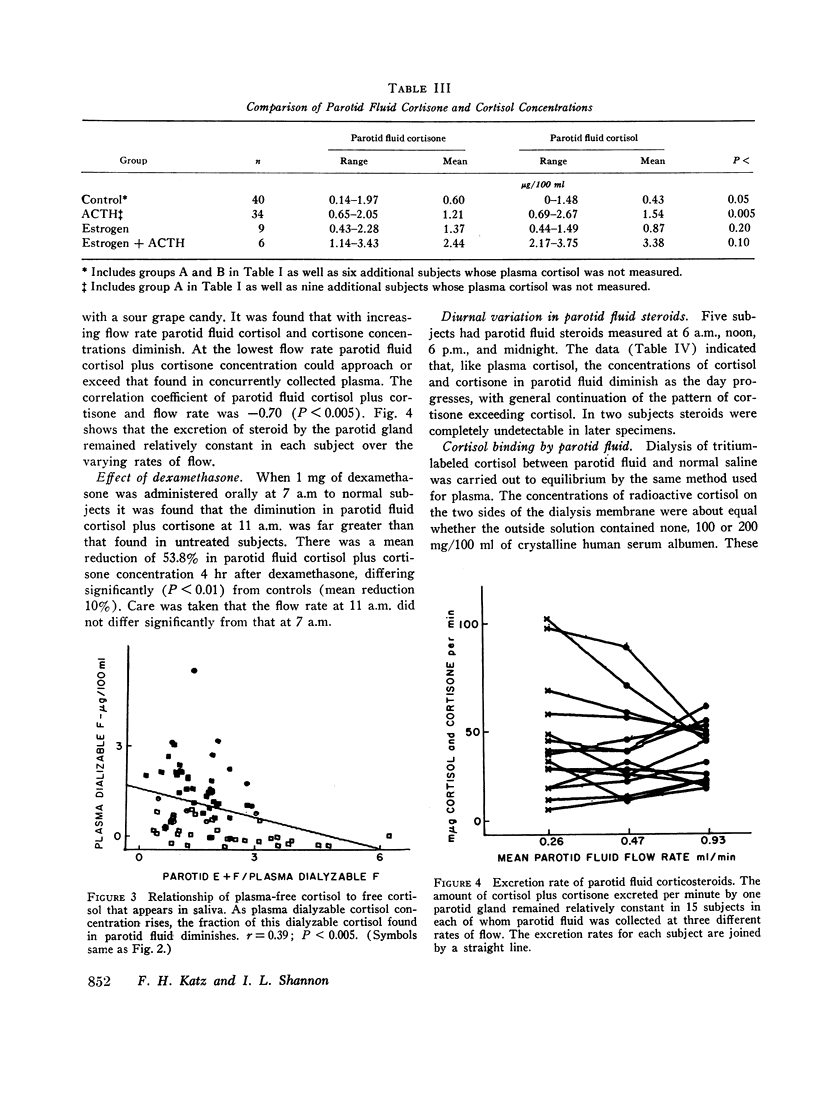

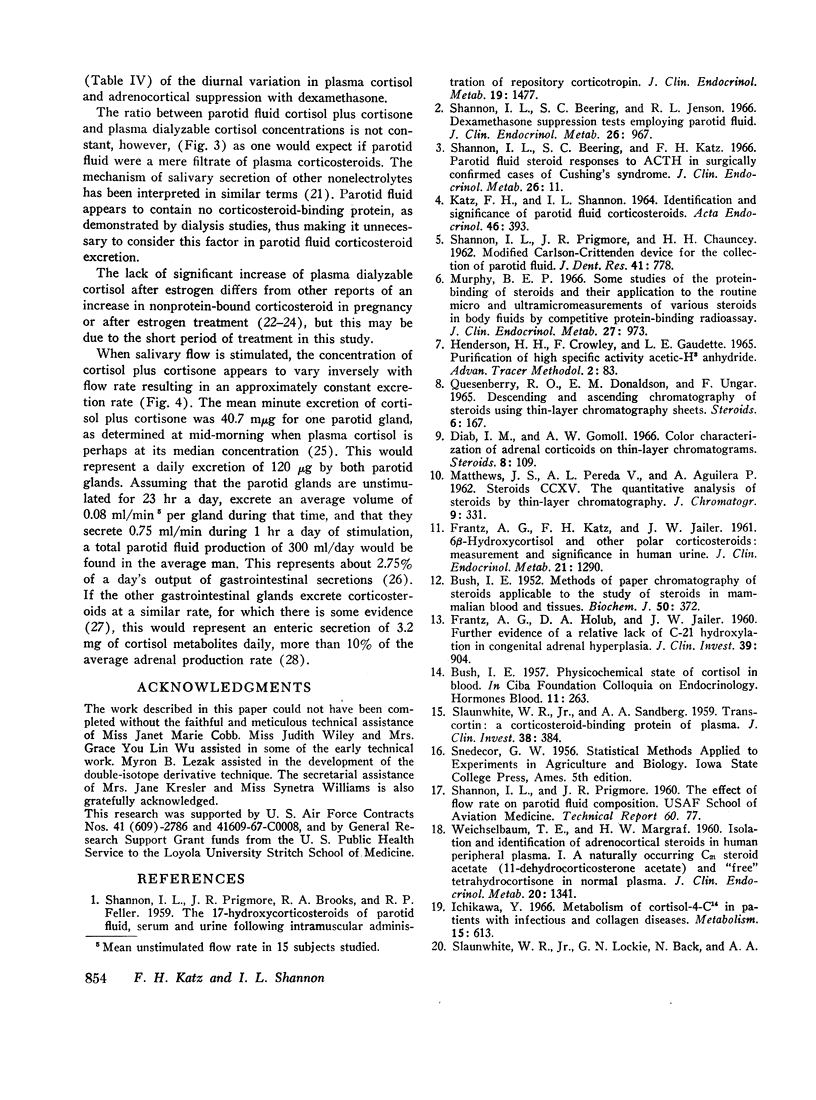
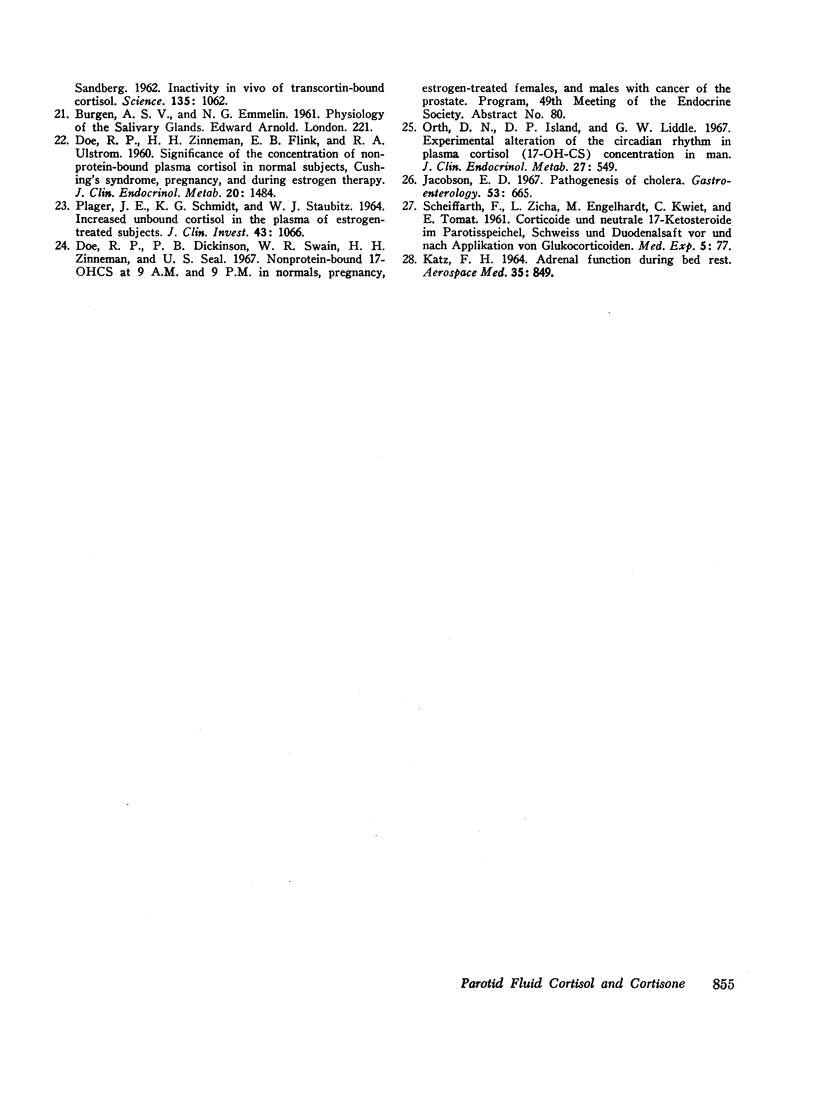
Selected References
These references are in PubMed. This may not be the complete list of references from this article.
- DOE R. P., ZINNEMAN H. H., FLINK E. B., ULSTROM R. A. Significance of the concentration of nonprotein-bound plasma cortisol in normal subjects, Cushing's syndrome, pregnancy, and during estrogen therapy. J Clin Endocrinol Metab. 1960 Nov;20:1484–1492. doi: 10.1210/jcem-20-11-1484. [DOI] [PubMed] [Google Scholar]
- Diab I. M., Gomoll A. W. Color characterization of adrenal corticoids on thin-layer chromatograms. Steroids. 1966 Aug;8(2):109–110. doi: 10.1016/0039-128x(66)90085-7. [DOI] [PubMed] [Google Scholar]
- FRANTZ A. G., HOLUB D. A., JAILER J. W. Further evidence of a relative lack of C-21 hydroxylation in congenital adrenal hyperplasia. J Clin Invest. 1960 Jun;39:904–908. doi: 10.1172/JCI104110. [DOI] [PMC free article] [PubMed] [Google Scholar]
- FRANTZ A. G., KATZ F. H., JAILER J. W. 6beta-Hydroxycortisol and other polar corticosteroids: measurement and significance in human urine. J Clin Endocrinol Metab. 1961 Oct;21:1290–1303. doi: 10.1210/jcem-21-10-1290. [DOI] [PubMed] [Google Scholar]
- Henderson H. H., Crowley F., Gaudette L. E. Purification of high specific activity acetic-H3 anhydride. Adv Tracer Methodol. 1965;2:83–86. doi: 10.1007/978-1-4684-8622-3_7. [DOI] [PubMed] [Google Scholar]
- Ichikawa Y. Metabolism of cotisol-4-C in patients with infectious and collagen diseases. Metabolism. 1966 Jul;15(7):613–625. doi: 10.1016/0026-0495(66)90123-5. [DOI] [PubMed] [Google Scholar]
- KATZ F. H. ADRENAL FUNCTION DURING BED REST. Aerosp Med. 1964 Sep;35:849–851. [PubMed] [Google Scholar]
- KATZ F. H., SHANNON I. L. IDENTIFICATION AND SIGNIFICANCE OF PAROTID FLUID CORTICOSTEROIDS. Acta Endocrinol (Copenh) 1964 Jul;46:393–404. doi: 10.1530/acta.0.0460393. [DOI] [PubMed] [Google Scholar]
- MATTHEWS J. S., PEREDA A. L., AGUILERA A. Steroids. CCXV. The quantitative analysis of steroids by thin-layer chromatography. J Chromatogr. 1962 Nov;9:331–338. doi: 10.1016/s0021-9673(00)80793-1. [DOI] [PubMed] [Google Scholar]
- Murphy B. E. Some studies of the protein-binding of steroids and their application to the routine micro and ultramicro measurement of various steroids in body fluids by competitive protein-binding radioassay. J Clin Endocrinol Metab. 1967 Jul;27(7):973–990. doi: 10.1210/jcem-27-7-973. [DOI] [PubMed] [Google Scholar]
- Orth D. N., Island D. P., Liddle G. W. Experimental alteration of the circadian rhythm in plasma cortisol (17-OHCS) concentration in man. J Clin Endocrinol Metab. 1967 Apr;27(4):549–555. doi: 10.1210/jcem-27-4-549. [DOI] [PubMed] [Google Scholar]
- PLAGER J. E., SCHMIDT K. G., STAUBITZ W. J. INCREASED UNBOUND CORTISOL IN THE PLASMA OF ESTROGEN-TREATED SUBJECTS. J Clin Invest. 1964 Jun;43:1066–1072. doi: 10.1172/JCI104990. [DOI] [PMC free article] [PubMed] [Google Scholar]
- Quesenberry R. O., Donaldson E. M., Ungar F. Descending and ascending chromatography of steroids using thin-layer chromatography sheets. Steroids. 1965 Aug;6(2):167–175. doi: 10.1016/0039-128x(65)90045-0. [DOI] [PubMed] [Google Scholar]
- SCHEIFFARTH F., ZICHA L., ENGELHARDT M., KWIET C., TOMAT E. [Corticoids and neutral 17-ketosteroids in parotid gland saliva, sweat and duodenal juice before and after the application of glucocorticods]. Med Exp Int J Exp Med. 1961;5:77–90. [PubMed] [Google Scholar]
- SHANNON I. L., PRIGMORE J. R., BROOKS R. A., FELLER R. P. The 17-hydroxycorticosteroids of parotid fluid, serum and urine following intramuscular administration of repository corticotropin. J Clin Endocrinol Metab. 1959 Nov;19:1477–1480. doi: 10.1210/jcem-19-11-1477. [DOI] [PubMed] [Google Scholar]
- SHANNON I. L., PRIGMORE J. R., CHAUNCEY H. H. Modified Carlson-Crittenden device for the collection of parotid fluid. J Dent Res. 1962 Jul-Aug;41:778–783. doi: 10.1177/00220345620410040801. [DOI] [PubMed] [Google Scholar]
- SLAUNWHITE W. R., Jr, SANDBERG A. A. Transcortin: a corticosteroid-binding protein of plasma. J Clin Invest. 1959 Feb;38(2):384–391. doi: 10.1172/JCI103812. [DOI] [PMC free article] [PubMed] [Google Scholar]
- SLAUNWHITE W. R., LOCKIE G. N., BACK N., SANDBERG A. A. Inactivity in vivo of transcortin-bound cortisol. Science. 1962 Mar 23;135(3508):1062–1063. doi: 10.1126/science.135.3508.1062. [DOI] [PubMed] [Google Scholar]
- Shannon I. L., Beering S. C., Jenson R. L. Dexamethasone suppression tests employing parotid fluid. J Clin Endocrinol Metab. 1966 Sep;26(9):967–969. doi: 10.1210/jcem-26-9-967. [DOI] [PubMed] [Google Scholar]
- Shannon I. L., Beering S. C., Katz F. H. Parotid fluid steroid responses to ACTH in surgically confirmed cases of Cushing's syndrome. J Clin Endocrinol Metab. 1966 Jan;26(1):11–13. doi: 10.1210/jcem-26-1-11. [DOI] [PubMed] [Google Scholar]
- WEICHSELBAUM T. E., MARGRAF H. W. Isolation and identification of adrenocortical steroids in human peripheral plasma. I. A naturally occurring C21 steroid acetate (11-dehydrocorticosterone acetate) and "free" tetrahydrocortisone in normal plasma. J Clin Endocrinol Metab. 1960 Oct;20:1341–1350. doi: 10.1210/jcem-20-10-1341. [DOI] [PubMed] [Google Scholar]


